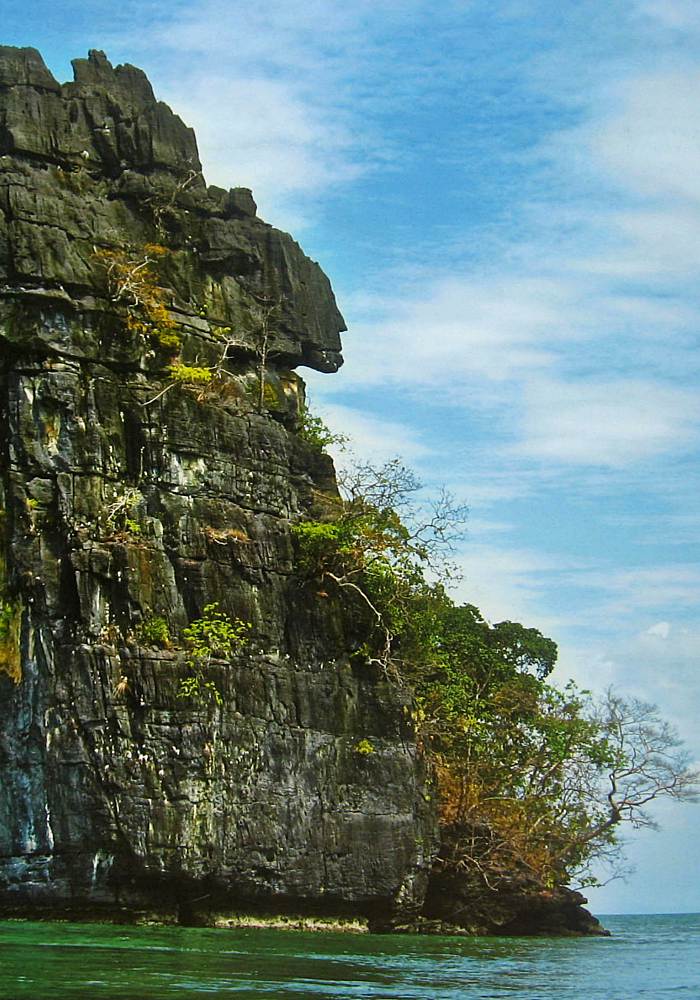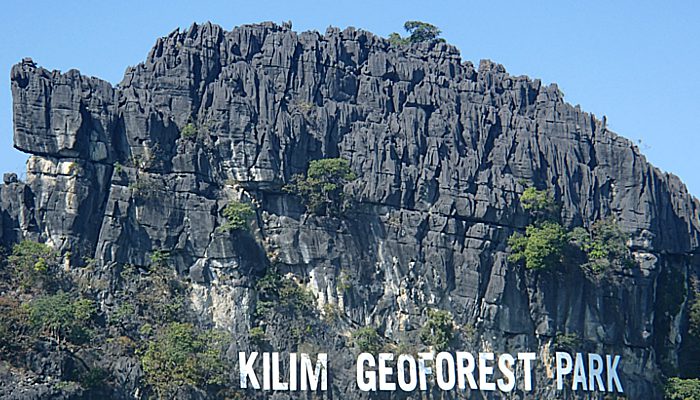
Various shapes and forms of hills, islands and pinnacles in Kilim area are caused by the dissolution of Setul limestone.
Dissolution usually begins along weaker zones like joints, faults (an extended break in a body of rock) and bedding planes (layering of rocks). One of the key landform features in Kilim is bare rock with very few surface streams. Dramatic features, such as these survive as remnant of ongoing dissolution processes. Sometimes, dissolution of the limestone results in razor-sharp limestone spikes or needles called pinnacles. These pinnacles can be left standing as stacks in the sea after prolonged erosion.
Coastal landforms here are dramatic, with cliffs dropping vertically into the water. Some of these cliffs have been etched and carved into notches and arches by wave actions. Underground, karts landforms have very well developed drainage systems. Basically, acid rain seeps into the very small cracks that exist in the limestone beds and dissolve cavities along faults and joints. As these features enlarge, they join together to form big chambers of passageways. There are numerous caves in Kilim, such as Gua Kelawar, Gua Cherita, Gua Buaya and Gua Langsuir.

